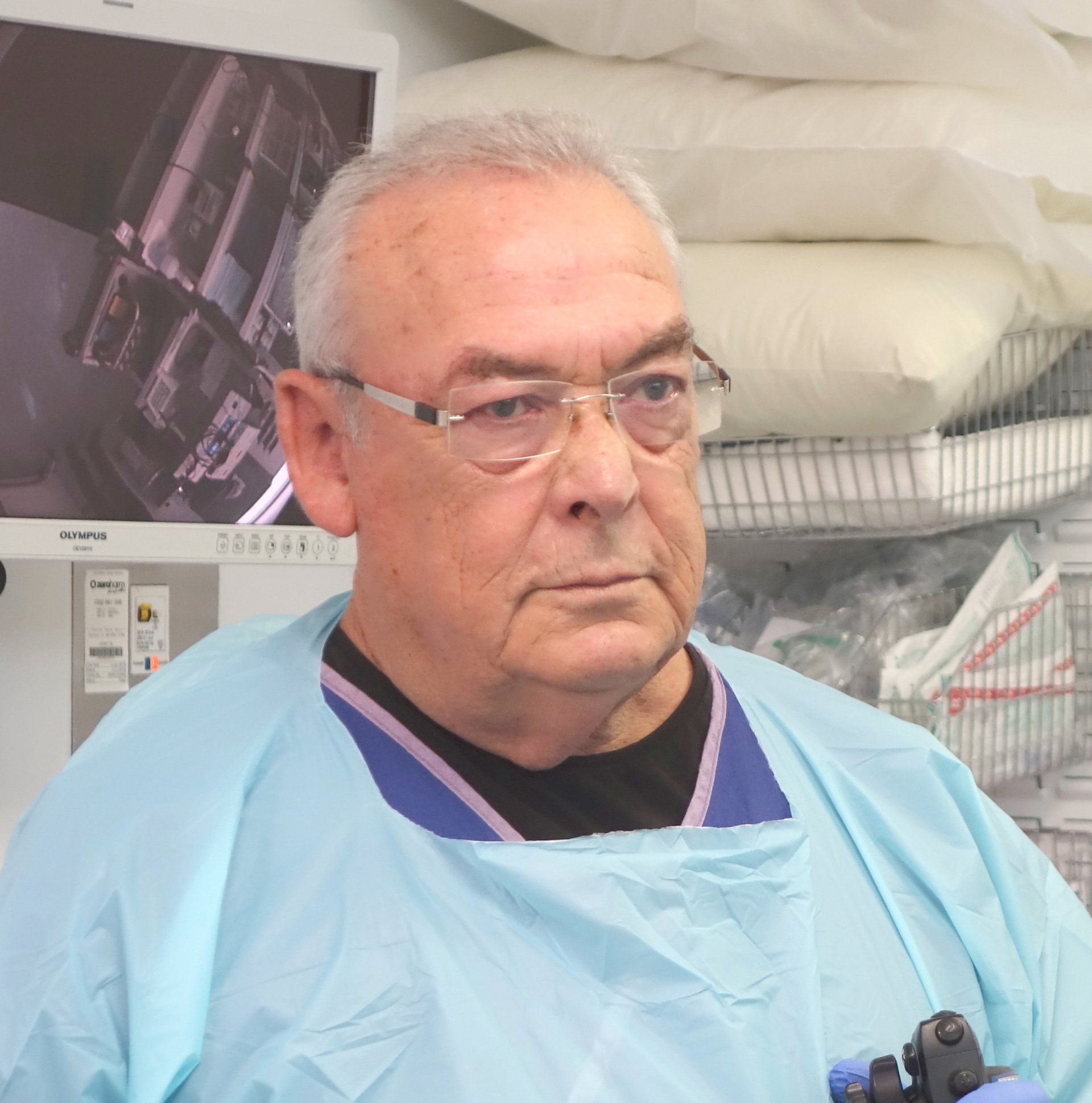Rectal/Anal Bleeding
What is Rectal Bleeding?
Rectal bleeding refers to the passage of blood through the anus along with the stools. The rectum is the last part of the large intestine present just above the anus.
Rectal bleeding is referred to as bright red to dark maroon coloured blood passing along with stools. The amount of blood loss varies from mild traces to severe life-threatening bleeds. Bleeding can occur from any part of the gastrointestinal tract due to various causes.
Who does Rectal Bleeding Affect?
Rectal bleeding can affect anyone, especially individuals with other digestive tract disorders.
People are more likely to be at risk of experiencing rectal bleeding who have:
- chronic constipation,
- auto-immune disorders of the gut
- colon cancer
How does Rectal Bleeding Occur?
Rectal bleeding can occur due to a number of reasons, which includes swollen blood vessels, infections, cancers and anal tears. Each of these causative factors results in passing of blood (fresh red or maroon coloured from the upper GI tract) along with stool with each bowel movement.
Causes of Rectal Bleeding
Some of the common causes of rectal bleeding include:
- Piles (hemorrhoids)
are swollen blood vessels found in and around the rectal region. These can cause bleeding when passing stools and irritate the surrounding skin.
- Anal Fissure
is a small painful tear in the tissue lining of the anus.
- Angiodysplasia of the colon
is related to aging and occurs due to enlarged blood vessels in the colon.
- Gastroenteritis:
Viral or bacterial stomach infection causing bloody diarrhea with abdominal cramps and vomiting.
- Diverticula:
Refers to tiny bulges that develop on the intestinal lining. The deteriorated blood vessels in the diverticula may burst or bleed.
- Other conditions
such as stomach ulcers, ulcerative colitis, Crohn’s disease and cancer of the colon or rectum may also cause rectal bleeding.
- Radiation therapy
Symptoms of Rectal Bleeding
Abdominal pain, visible blood clots or bleeding without pain are the common symptoms associated with rectal bleeding. The patient may first notice blood on toilet paper after wiping or in the toilet bowl.
They may also experience
- weakness,
- chest pain,
- dizziness,
- shortness of breath, or
- blood pressure variations based on the amount of blood loss.
The colour of blood and consistency of stools varies depending on the location and the cause of bleeding in the gastrointestinal tract. The colour of stools may vary from bright red to maroon to dark red or black.
A stool blood test may be required in cases of mild bleeding that is invisible to the naked eye.
Stages of Rectal Bleeding
There are no stages of rectal bleeding.
The bleeding can be considered mild to severe based on the amount of blood loss, and associated symptoms.
How is Rectal Bleeding Diagnosed?
The doctor begins by taking a complete history and a thorough physical examination. The physician will also inquire about the patient’s diet, eating habits and history of bowel movements. History taking may also include asking questions about the bleeding such as the colour of blood, amount of blood loss or other associated symptoms.
A physical examination of the anus can confirm the presence of anal fissures or hemorrhoids and helps to rule out other associated diseases.
The doctor may also perform some diagnostic tests, which help to determine the cause of rectal bleeding. These include:
- Fecal occult blood test
to check for small traces of blood present in the stools which is invisible to the naked eye. Changes in the colour of stool after adding a certain chemical to the test sample indicates the presence of blood in the stool.
- Anoscopy
is an evaluation of the rectum in which a lubricated flexible tube (anoscope) is inserted into the rectum through the anus to detect abnormalities such as hemorrhoids and anal fissures.
- Flexible sigmoidoscopy
uses a flexible sigmoidoscope to examine the sigmoid colon and the rectum.
- Colonoscopy
is a procedure to evaluate the colon for polyps, cancer, ulcerative colitis and Crohn’s disease.
- A radionuclide scan
is used to determine the location of gastrointestinal bleeding. A radioactive substance is injected and a nuclear camera is used to scan the stomach. The area affected with Meckel's diverticulum will concentrate the radioactive substance and show up on the scan. Another method involves attaching the radioactive substance to the blood of the patient and injecting the blood back into the veins. The tagged blood cells will leak into the bleeding area of the gastrointestinal tract and appear on the scan.
- A visceral angiogram uses X-rays to study the blood vessels of the digestive tract. This is an accurate test to locate rapid bleeding in the digestive tract.
How is Rectal Bleeding Treated?
Rectal bleeding can be effectively treated depending upon the related cause and underlying diagnosis.
The doctor will recommend the following steps in almost all cases:
- Increasing intake of fluids and fibre to ensure easy passing of stool, without requiring strenuous effort
- Reduced alcohol consumption
- Hemorrhoidal creams and stool softeners to treat rectal bleeding associated with anal fissures or hemorrhoids
- Medications to relieve pain or vasoconstrictors (decreases the size of blood vessels) to stop bleeding.
- Endoscopy can be used to stop bleeding by constricting or cauterizing the actively bleeding blood vessels.
- In cases where bleeding has not been reduced by medication, the doctor may recommend surgery to remove polyps, hemorrhoids, or tumours.
What if Rectal Bleeding is Untreated?
If left untreated, rectal bleeding can result in anemia, weakness and anxiety in mild cases.
In cases of severe rectal bleeding, massive loss of blood is a medical emergency and life-threatening, requiring immediate transfusion of blood and stopping the bleeding.
What are Hemorrhoids?
Hemorrhoids are a common cause of bleeding from the rectum. Also known as piles, hemorrhoids are in fact, swollen veins in the anal canal, and in their normal state, they are cushions that help with stool control.
They become pathological when swollen or inflamed. At this point, the condition is technically known as hemorrhoidal disease.
Who Does Hemorrhoids Affect?
Hemorrhoids can affect most people during their lifetime, with them not even realizing due to lack of symptoms.
According to an estimate, every three out of four adults will experience this disorder during their lifetime. People with a history of chronic constipation and poor diet are more likely to experience hemorrhoids.
How Do Hemorrhoids Occur?
Hemorrhoids occur when normal veins in the anal region, become swollen when under pressure, resulting in bleeding and associated symptoms.
Causes of Hemorrhoids
While the exact cause of hemorrhoids remains unknown, a number of factors which increase intra-abdominal pressure, in particular, constipation, is believed to play a role in their development.
Anyone at any age can be affected by hemorrhoids. However, they are usually more common in elderly people and during pregnancy.
Researchers are not certain what causes hemorrhoids. “Weak” veins – leading to hemorrhoids and other varicose veins – may be inherited. It’s likely that extreme abdominal pressure causes the veins to swell and become susceptible to irritation.
The pressure can be caused by
- obesity,
- pregnancy,
- standing or sitting for long periods,
- straining on the toilet,
- coughing, and sneezing, vomiting, and
- holding breath while straining to do physical labour.
Diet has a pivotal role in causing – and preventing – hemorrhoids.
People who consistently eat a high- fibre diet are less likely to get hemorrhoids, but those who prefer a diet high in processed foods are at greater risk of hemorrhoids. A low-fibre diet or inadequate fluid intake can cause constipation, which can contribute to hemorrhoids in two ways: it promotes straining on the toilet and it also aggravates the hemorrhoids by producing hard stools that further irritate the swollen veins.
Symptoms of Hemorrhoids
Most cases of hemorrhoids are mild, and the symptoms often disappear on their own after a few days. Some people may not even realize they have hemorrhoids, as they do not experience symptoms. However, when symptoms do occur they may include:
- Bleeding after passing a stool (the blood will be bright red)
- Itchiness around the anal opening
- A lump hanging down outside of the anus, which may need to be pushed back in after passing a stool
- A mucus discharge after passing a stool
- Soreness, redness and swelling around the anus
Types of Hemorrhoids
Hemorrhoids can be classified into:
Internal Hemorrhoids
Internal hemorrhoids are those that form above a point 2-3 cm inside the back passage (anus) in the upper part of the anal canal. Internal hemorrhoids are usually painless because the upper anal canal has no pain nerve fibres.
External Hemorrhoids
External hemorrhoids are those that form below that point, in the lower part of the anal canal. External hemorrhoids may be painful because the lower part of the anal canal has lots of pain nerve fibres.
Stages of Hemorrhoids
Internal piles can be classified into grades 1 to 4 according to their severity and size:
- Grade 1 are small swellings on the inside lining of the anal canal. They cannot be seen or felt from outside the anus. Grade 1 piles are common. In some people they enlarge further to grade 2 or more.
- Grade 2 are larger. They may be partly pushed out from the anus when stool is passed, but quickly spring back inside again.
- Grade 3 hang out from the anus when stool is passed. The patient may feel one or more as small, soft lumps that hang from the anus. However, these can be pushed back inside the anus with a finger.
- Grade 4 permanently hang down from within the anus, and they cannot be pushed back inside. They sometimes become quite large.
How are Hemorrhoids Diagnosed?
The doctor begins by taking a complete history and a thorough physical examination. In a case of external hemorrhoids, the doctor can simply confirm his diagnosis by visual inspection. Other procedures to confirm the diagnosis of internal hemorrhoids include:
- Digital rectal exam, during which the doctor checks for any unusual growths.
- Visual inspection of the internal hemorrhoids using a proctoscope or sigmoidoscope.
How are Hemorrhoids Treated?
Initial treatment for mild to moderate cases consists of increasing fibre intake, oral fluids to maintain hydration, topical medicines to help with pain, and rest.
In mild cases, certain home remedies can be tried which includes soaking in a warm bath, using wet wipes for cleaning the anal area, and applying ice packs. The doctor can recommend a number of minor may be performed if symptoms are severe or do not improve with conservative management.
Rubber band ligation is a procedure where a very tight elastic band is put around the base of the hemorrhoid to cut off its blood supply. The hemorrhoid should fall off after about a week. An alternative therapy consists of injecting the hemorrhoids with a chemical substance to shrink them and using coagulation techniques.
Surgery under general anaesthetic is sometimes used to remove or shrink large or external hemorrhoids but surgery is often the last resort.
What if Hemorrhoids are Untreated?
If left untreated, rectal bleeding can result in anemia, weakness and anxiety in mild cases. In cases of severe rectal bleeding, massive loss of blood is a medical emergency and life threatening, requiring immediate transfusion of blood and stopping the bleeding.
Dr Donald Walker
Write your caption hereMore
Dr Johan Van Den Bogaerde
Write your caption hereMore
Trusted for more than 25 Years
PANCREAS & BILIARY
Digestion Problems - Dyspepsia









